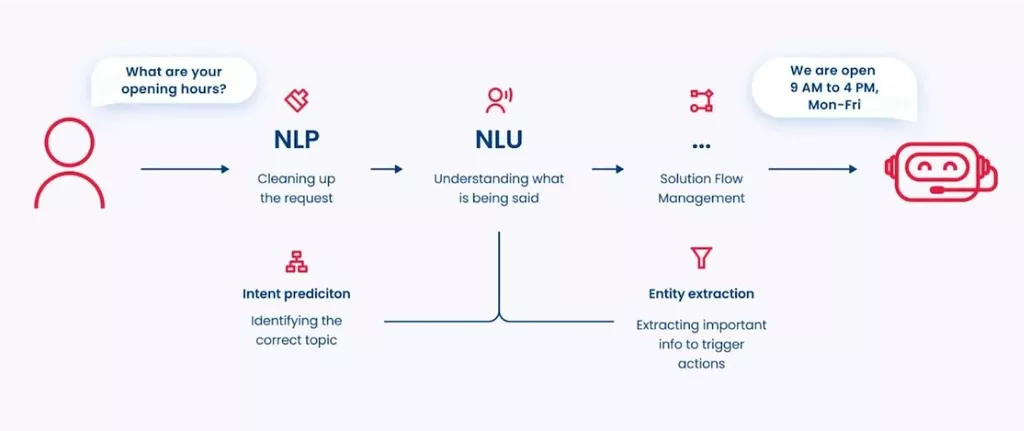Ideally, a solution architect should have technical skills and past architecture experience. Solution architects are the link between the business strategy and IT operations and therefore need to have an understanding of an organization’s architectural environment as well as real-life technical solutions. In their role, they need to establish credibility with both business leaders and IT experts. That is why good communication with a non-technical and highly technical audience is key.

This person needs to ensure that the new solution fits into the existing enterprise architecture from technical, business, user, and other perspectives. A solutions architect is responsible for creating a comprehensive architecture for a software solution and providing strategic direction throughout the development process. https://www.globalcloudteam.com/ An enterprise architect has a much larger scope of work compared to other architect specializations. This specialist develops and proposes strategic technological initiatives to the business’s top executives and explains their benefits. Based on strategic plans, an enterprise architect designs complex enterprise ecosystems.
For Organizations
All the necessary information to become a solutions architect from scratch is detailed below. The software as service (SaaS) culture has transformed the digital landscape and often demands a system overhaul. Solution architects use system architecture to design new software entities that automate processes. In their conceptual model, they also determine the placement and behavior of each software component. He or she is mainly responsible for building a proper infrastructure to support a company’s business strategy. For me, coming from a sysadmin background, I already had a very strong base of Linux, networking, and programming.

Looking for a way to build your skills and expertise as a solutions architect and add to your existing resume? Consider a course in software architecture to better familiarise yourself with the most common solution architectures. Or consider a Specialisation such as IBM’s for DevOps, Cloud, and Agile Foundations to learn some of the most popular concepts and methodologies for managing the development process.
Tech Stacks: Insights on the Building Blocks of the Digital World
Solution architecture can be introduced to the corporate structure by technology consulting organizations if the process of integrating new software systems isn’t systematic. On top of that, there is no need to have a solution architect for every single project. If you implement a single tech module that is proven to be working in similar contexts, you don’t need a solution architect.

In fact, they’re 13.4% less likely to graduate with a Master’s Degree and 0.6% less likely to earn a Doctoral Degree. Lead consultants tend to reach similar levels of education than solutions architects. In fact, lead consultants are 0.5% less likely to graduate with a Master’s Degree and 0.6% more likely to have a Doctoral Degree. While the two careers have a salary gap, they share some of the same responsibilities. Employees in both solutions architect and lead consultant positions are skilled in java, digital transformation, and azure.
Overseeing the Implementation and Integration of Solutions
In solution architecture, the client needs are expanded to business needs that in one way or another are related to technology. These needs usually crystallize through re-assessing existing systems and finding out how they benefit or harm the organization in the long run. Sometimes, these evaluations are run by business analysts who also provide a definition of the problem. In the next step, solution architects take this problem and start crafting a description of solutions that appropriately address this need. From a bird-eye view, solution architects can be seen as the link between enterprise architects and technical architects as they’re trying to find the right IT answer to a specific business riddle.
A good and well-considered architecture is essential for the effective development of any software. The correct architectural solution makes it possible to scale the product at what does solution architect do minimal cost and painlessly for an existing product and customers. Simply put, this is the foundation of the product on which the long-term success of any project depends.
Lead Consultant
Clients receive 24/7 access to proven management and technology research, expert advice, benchmarks, diagnostics and more. Also, real customer exposure helped to condition my brain to real-life applications. If you’re only reading books, remember, a book can only capture that one author or individual’s perspective, not a wider perspective. They tend to be investigative individuals, which means they’re intellectual, introspective, and inquisitive.
- While enterprise architecture focuses on strategy, solution architecture focuses on detailed planning.
- If you’re only reading books, remember, a book can only capture that one author or individual’s perspective, not a wider perspective.
- Solutions architects are valuable company assets who design and handle software solutions.
- In practice, the Solution Architect role is typically filled by a small team rather than one individual.
- Once these conditions are fulfilled, the hopeful will have to register with PeopleCert (the approved Axelos Examination Institute), fill out the application, and present their CV.
- It’s dangerous to assume that hiring an enterprise architect who delegates tasks to development teams can cut out the middleman.
ISSAP stands for Information Systems Security Architecture Professional, and this designation shows that you can lead and create effective security solutions for an IT department. Solutions architects have a bird’s eye view of the entire project they are running. They coordinate with different departments to smoothly develop scalable solutions. They might collaborate with software developers, cloud solutions experts, sales team members, and machine learning engineers. This career involves the implementation of complex technologies like microservices architecture or cloud architecture. These architects must have a background in the underlying technologies, and the differences between various options, so that they can make an informed decision about which solution is best for their client.
How do I become a solutions architect?
A solution architect’s task is to evaluate all business requirements and come up with solutions in the form of products or services. Once they are given a problem, solution architects are not only in charge of finding answers but also of actively leading the technical vision to success. Solution architecture is a practice to provide ground for software development projects by tailoring IT solutions to specific business needs and defining their functional requirements and stages of implementation. The previous sections have outlined the importance of solution architecture during digital transformations and how solution architects can drive change by managing the implementation of IT projects. But what are more specific solution architecture benefits that motivate business leaders to hire SA specialists?
The architecture field within an IT organization is rich and varied, extending beyond the role of a Solutions Architect. Other crucial roles exist, namely Enterprise Architect and Technical Architect, which contribute significantly to an organization’s IT strategy. While all three professions share some commonalities, they have different focuses. These specialists start very early in the project, laying out what is to come. Their tasks usually begin with choosing the right technology for the business problem(s) and managing architectural concerns to ensure more productive and effective outcomes. A solution architect is responsible for the definition, planning and implementation of a solution.
What Is a Solutions Architect (and How Do I Become One)?
Certifications are intended to validate the skills and expertise of solution architects. So, having one or more credentials proves the expert’s proficiency in specific skills. While a solution architect doesn’t directly get involved in project management, accounting for deadlines and given resources is inevitable. Solution architects must be able to make decisions about which solutions are advantageous and which are worthless in a given situation.
